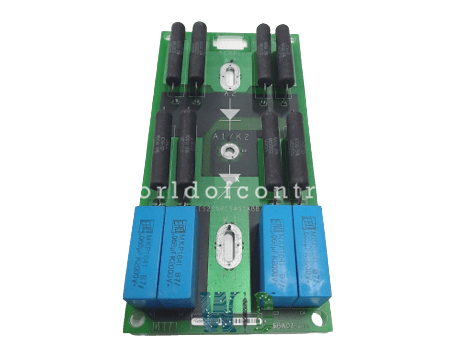
World Of Controls understands the criticality of your requirement and works towards reducing the lead time as much as possible.
IS200RCSAG1A - Frame RC Snubber Board is available in stock which ships the same day.
IS200RCSAG1A - Frame RC Snubber Board comes in UNUSED as well as REBUILT condition.
To avail our best deals for IS200RCSAG1A - Frame RC Snubber Board, contact us and we will get back to you within 24 hours.
SPECIFICATIONS:
Part No: IS200RCSAG1A
Manufacturer: General Electric
Function: Frame RC Snubber Board
Series: EX2100
Operating temperature: -35 to 65 ºC
Power Supply Voltage: 25 V dc
Board Size: 23.8 cm high x 8.6 cm
Weight: 0.45 kgs
Availability: In Stock
Country of Origin: USA
Manual: GEI-100303
FUNCTIONAL DESCRIPTION:
IS200RCSAG1A is a Frame RC Snubber Board manufactured and designed by General Electric as part of the EX2100 Series used in the GE Excitation Control System. For SCR/diode modules in 1800 or 1000 Innovation SeriesTM non-regenerative sources, the IS200RCSA Frame RC Snubber Board (RCSA) provides the snubber circuitry. In each non-regenerative source, there are three RCSA boards, one for each phase, and they are installed right on the power devices. Outside of the bridge cabinet, a different ac line filter is placed. The RCSA board guards against voltage overshoots from one device to another during commutation, shielding the SCR/diode modules. Additionally, the board isolates disruptive noise from the gate drive circuit.
Each board has two sets of SCR (cathode) and diode (anode) connections to account for the variations in physical architecture between the 1800 and 1000 frame units. Up to 660 VLL rms of AC input can be used with the RCSA board.
SNUBBER CIRCUIT:
For the SCR and the diode, there are two identical resistor/capacitor (R/C) snubber circuits on each board. The power device is linked across each snubber circuit (anode to cathode).
APPLICATION DATA:
No fuses, test points, LED indicators, or movable hardware are present on the RCSA board. Each phase's SCR/diode module serves as its mounting point, and it is secured thereby these connections. The board has four holes at the corners that can be used to fasten it with wire ties. There is also a cutout for the SCR gate and cathode connector, identified by the letters SCRPL.
WOC has the largest stock of GE Excitation Turbine Control System Replacement Parts. We can also repair your faulty boards and supply unused and rebuilt boards backed up with a warranty. Our team of experts is available round the clock to support your OEM needs. Our team of experts at WOC is happy to assist you with any of your automation requirements. For pricing and availability on any parts and repairs, kindly get in touch with our team by phone or email.
Why is it important to use an RC snubberboard in a turbine control system?
Turbine control systems often involve high-power switching operations, which can generate significant voltage transients. These transients pose a risk of damaging electronic components or causing interference that could affect the performance of the control system. The RC snubber board provides a reliable solution to address these challenges, enhancing the overall reliability and longevity of the turbine control system.
Which components within a turbine control system can benefit from an RC snubberboard?
Various components such as contactors, solenoid valves, motor drives, and power supplies commonly found in turbine control systems can benefit from the use of RC snubber boards. These boards help protect these components from voltage spikes induced by switching operations, ensuring smooth and reliable operation of the turbine system.
How does the installation of an RC snubberboard impact the performance of a turbine control system?
Properly installed RC snubber boards effectively suppress voltage spikes and transients, reducing the risk of component damage and system malfunctions. This leads to improved stability, reliability, and efficiency of the turbine control system, ultimately minimizing downtime and maintenance costs